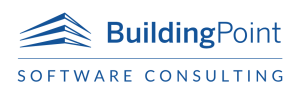By Todd Hagler
Originally published on http://www.dexterchaney.com/blog/getting-the-most-out-of-your-b2b-brand-part-3-of-how-to-build-brand-and-influence-customers
As I noted in part one of this series on branding, your brand is more than just a logo design. Your brand is the expectation made by all of the encounters with your name, your logo and your marketing messages—for your customers and prospects, it’s the entire experience that they have with your company from the time they first learn about you.
Successful branding requires a consistent message across all communication. You can shorten your sales cycle, improve customer satisfaction and raise your visibility in the marketplace by consistently delivering on that expectation. Consistency is key; without it you’re diluting your message—even contradicting it.
Now that you’ve got a handle on your brand messaging there are a few things you can do to help create consistency. Visually, all of your marketing materials should be consistent—same quality, logo, colors, fonts and style of messaging every time.
Marketing materials include:
- Websites
- Marketing Brochures
- Letterhead and Business Cards
- Email Signatures
- Invoices
- Case Studies
- Corporate Vehicles
- Uniforms
Brand consistency extends to every experience a customer or prospect has with your company. If your employees don’t reflect your brand every time they touch your market, you’re losing an opportunity to strengthen your competitive position.
If you’ve followed the advice from part two of this series, you’ve invested some time developing your mission, vision and value statements. Make sure that everyone in your company understands and practices them. Everyone in your company is a brand manager—accountable for upholding the branding of your business. Be sure to share, train and enforce your branding guidelines throughout your company.
Facebook, Twitter, LinkedIn and Google+
Facebook is arguably the best platform for increasing your brand awareness. Its sheer reach makes it a must-use. Facebook is the only social media platform you need to be on, no matter what your field of business. Check out Facebook for business.
Things to keep in mind: posts with photos generate more engagement, shorter posts perform better than long ones (more than 250 words), you’ll get more engagement posting on Fridays and asking questions can nearly double your engagement. How about that?
Twitter users tend to follow brands there more than on other platforms, making it great for relationship building and communicating with your customers. Because Twitter tends to be more about in-the-moment development, users tend to follow brands who keep them up-to-date with industry developments. Check out Twitter for business.
Things to keep in mind: again, photos generate more interest, increasing favorites and retweets, it’s a good bet to post during the morning commute hours when those on public transit are bored and reading on their mobile devices, because Twitter is about here and now, you’ll do better with contest and limited time discounts than just promoting your product or service.
LinkedIn and Google+ are more geared toward the individual so all professionals should be on them, as individuals. That said, it’s not a bad idea to have a business page on them. Since they lean more toward networking, checking out business partners, and in LinkedIn’s case, job hunting users aren’t logging in hourly or even daily. So you won’t have to spend as much time maintaining your presence there. Check out LinkedIn or Google for business.
Things to keep in mind: before joining a LinkedIn group, be sure to check its statistics using the About link under their name to be sure they are a good match and are as active as you’d like, Google+ is ideal for content sharing and its Communities function provides a place to find like-minded businesses.
Maintaining social media sites can be time consuming. That’s why I’ve only discussed the top four I believe are most relative to the construction industry. However, for more image-based businesses Instagram and Pinterest are incredibly valuable. For example, if you’re more architecturally based, they can provide an ideal platform for generating interest with your professionally shot architectural images.
Building your brand and influencing customers is an ongoing job, one in which the playing field (thanks to today’s social media world) is constantly changing. This has been a very high level overview of building a B2B brand. My intent wasn’t to give you all of the answers, but to get you thinking about how brand plays a role in building your business and to point you in the right direction to help you get started. Please share your thoughts about B2B brand, your challenges and your successes in the comments below.
Reading List:
B2B A to Z: Marketing Tools and Strategies That Generate Leads for Business-to-Business Companies (Bill Blaney, Denham Publishing, 2012)
Social Media: Dominating Strategies for Social Media Marketing with Twitter, Facebook, Youtube, LinkedIn, and Instagram (Michael Richards, CreateSpace, 2015)
Everything There Is To Know About Logo Design (bluesodapromo, ebook)

